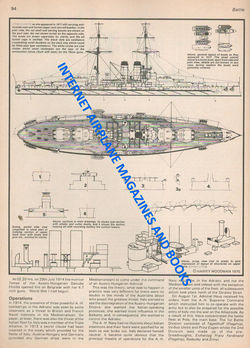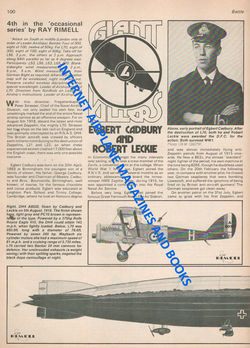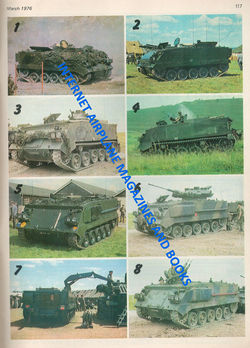IAN
BATTLE BATTLE MAR 76 FV432 APC WW1 GOTHAS SIEGECRAFT FORTIFICATIONS NASSAU REGT
SIEGECRAFT AND FORTIFICATIONS
(FLAME DEVICES, BALLISTA, STONE THROWER, ANTI-ELEPHANT DEVICES)
MUSEE DES BLINDES FRENCH TANK
MUSEUM SAUMUR
WW1 THE NIGHT OF THE GERMAN
GOTHA BOMBERS
BATTLES THROUGH HISTORY: WW1
VILLERS-BRETONNEUX 24TH APRIL 1918 - In the First World War, on 24
April 1918, Villers-Bretonneux was the site of the world's first battle between
two tank forces: three British Mark IVs against three German A7Vs. The Germans
took the town, but that night and the next day it was recaptured by two
brigades of the First Australian Imperial Force at a cost of some 1,200
Australian lives.
GIANT KILLERS: WW1 GERMAN
ZEPPELINS: EBERT CADBURY & ROBERT LECKIE
TANK BATTLE
FV432 SERIES ARMOURED PERSONNEL
CARRIERS APC - The FV432 is the armoured personnel carrier variant in the British
Army's FV430 series of armoured fighting vehicles. Since its introduction in
the 1960s, it has been the most common variant, being used for transporting
infantry on the battlefield. At its peak in the 1980s, almost 2,500 vehicles
were in use. Although the FV432 was to
have been phased out of service in favour of newer vehicles such as the Warrior
and CVR(T), 500 were upgraded to extend their service into the 2020s
BATTLEFIELDS THEN AND NOW: WW1 BATTLE
OF MONS - The Battle of Mons was the first major action of the British
Expeditionary Force (BEF) in the First World War. It was a subsidiary action of
the Battle of the Frontiers, in which the Allies clashed with Germany on the
French borders. At Mons, the British Army attempted to hold the line of the
Mons–Condé Canal against the advancing German 1st Army. Although the British
fought well and inflicted disproportionate casualties on the numerically
superior Germans, they were eventually forced to retreat due both to the
greater strength of the Germans and the sudden retreat of the French Fifth
Army, which exposed the British right flank. Though initially planned as a
simple tactical withdrawal and executed in good order, the British retreat from
Mons lasted for two weeks and took the BEF to the outskirts of Paris before it
counter-attacked in concert with the French, at the Battle of the Marne.
NASSAU INFANTRY REGIMENT 1803 –
1914: The 87th (1st Nassau) Infantry Regiment (German: 1. Nassauisches
Infanterie-Regiment Nr. 87) was an infantry regiment, part of the 41st Infantry
Brigade and the 21st Division. The unit was created in the year 1809, and they
were garrisoned in the city of Mainz.The 87th infantry regiment also had very
distinctive uniforms, since unlike their German and Dutch counterparts the
Nassau regiment was equipped with dark green uniforms and yellow baldric's on
both shoulders where as the officers wore dark green uniforms and a white
baldric on the right shoulder.
AUSTRO-HUNGARIAN NAVY WW1
BATTLESHIPS - THE TEGETTHOFFS: The Tegetthoff class (also called the Viribus
Unitis class) was a class of four dreadnought battleships built for the
Austro-Hungarian Navy. Named for Austrian Admiral Wilhelm von Tegetthoff, the
class was composed of SMS Viribus Unitis, SMS Tegetthoff, SMS Prinz Eugen, and
SMS Szent István. Construction started on the ships shortly before World War I;
Viribus Unitis and Tegetthoff were both laid down in 1910, Prinz Eugen and
Szent István followed in 1912. Three of the four warships were built in the
Stabilimento Tecnico Triestino shipyard in Trieste; Szent István was built in
the Ganz-Danubius shipyard in Fiume, so that both parts of the Dual Monarchy
would participate in the construction of the ships. The Tegetthoff-class ships
hold the distinction for being the first and only dreadnought battleships of
the Austro-Hungarian Navy. The SMS Szent István had a different more modern
propulsion system than her sister ships
Viribus Unitis and Tegetthoff
were commissioned into the fleet in December 1912 and July 1913, respectively.
Prinz Eugen followed in July 1914. The smaller shipyards in Fiume resulted in a
slower construction which was further delayed by the outbreak of the war, with
Szent István commissioned into the fleet in December 1915. This was too late
for her to take part in the Bombardment of Ancona in which the remaining ships
in the class saw action immediately following Italy's declaration of war on
Austria-Hungary in May 1915.
All of the Tegetthoffs were
members of the 1st Battleship Division at the beginning of the war and were
stationed out of the naval base at Pola. Following the Bombardment of Ancona
and the commissioning of Szent István, the four ships saw little combat due to
the Otranto Barrage which prohibited the Austro-Hungarian Navy from leaving the
Adriatic Sea. In June 1918, in an attempt to earn safer passage for German and
Austro-Hungarian U-boats through the Strait of Otranto, the Austro-Hungarian
Navy attempted to break the Barrage with a major attack on the strait, but it
was abandoned after Szent István was sunk by the Italian motor torpedo boat
MAS-15 on the morning of 10 June.
After the sinking of Szent
István, the remaining three ships of the class returned to port in Pola where
they remained for the rest of the war. When Austria-Hungary was facing defeat
in the war in October 1918, the Austrian government decided to transfer Viribus
Unitis to the newly formed State of Slovenes, Croats and Serbs in order to
avoid having to hand the ship over to the Allied Powers. Renamed Jugoslavija,
the ship was destroyed by an Italian mine in the Raid on Pola a day later.
Following the Armistice of Villa Giusti in November 1918, Prinz Eugen was ceded
to France where she was sunk as a target ship in 1922, while Tegetthoff was
handed over to Italy and scrapped between 1924 and 1925. The wreck of Viribus
Unitis was salvaged from Pola harbor and broken up between 1920 and 1930.
MARSHALL MAURICE de SAXE:
Maurice, Count of Saxony (German: Hermann Moritz von Sachsen, French: Maurice
de Saxe; 28 October 1696 – 20 November 1750) was a notable soldier, officer and
a famed military commander of the 18th century. The illegitimate son of
Augustus II the Strong, King of Poland and Elector of Saxony, he initially
served in the Army of the Holy Roman Empire, then the Imperial Army, before
finally entering French service. De Saxe became a Marshal and even Marshal
General of France. He is best known for his deeds in the War of the Austrian
Succession and especially for his decisive victory at the Battle of Fontenoy.








